Canadian 🇨🇦 canola export potential down 2MT
In Canada, the world largest canola exporter, supplies for 2025 remain tighter than last year. Beginning stocks are indeed estimated at just 1.8MT. Lower stocks combined with a reduction in planted canola area will lead to a significantly lower export potential, now pegged at 7MT down from 9MT last year! While production is expected to increase to 20.1 Mt, the higher yield compared to last year only partly offsets the impact of much lower opening stocks.
This is supportive for EU OSR prices, even if we will probably also need to import 3MT less than last year as our production is stronger this season (up from 16.8MT to 19.6MT). As a reminder, EU crushers use around 25MT of OSR each year.

Russian 🇷🇺 wheat crop – more questions than answers…
It is of course hard to get direct and timely reports of the wheat situation in Russia. However, we know early yields are lower than expected. We also hear they are not improving as anticipated. There are also other more official signals which have started worrying the market. Traders say new crop wheat is very slow to come to Black Sea terminals, amid lower yields in southern areas. Russian Government ordered urgent measures to boost agricultural exports after wheat exports hit a 2008 level low in July so far. Russian Government reduced wheat export taxes to zero, for the first time since 2022.
MATIF wheat is currently up 2%, back above €200 on Sept 2025, its highest level in 2 weeks.

Can the USD 🇺🇸 move up again (and stop pressuring our domestic prices down?)
Since Trump took power in January 2025, the USD has been falling and both the pound and the euro are now trading at more than 3-year-highs. This has had a direct negative impact of more than 15% on our domestic prices!
US interest rates are elevated and this should be supportive for the dollar.
So, why is the US dollar falling by record levels in 2025?
The sell-off is linked to unpredictable and unfunded economic policies which threaten the safe-haven role of the US dollar. Investors are also worried about Trump’s “big, beautiful” tax bill, currently under debate in the US Congress.
Conclusion: the dollar will only move up again once Trump will have clarified his stop-start tariff war. Markets need more clarity, they only have uncertainty for now.

World wheat prices supported by Middle East war.
The war in Iran is taking our production costs up with crude oil and fertilizer surging prices. Our crops need to follow the trend and they are indeed also moving up. Wheat markets went up 5% since the war begun last Friday. The big question now is when to sell as we continue to believe our markets are bearish and that we should consider any short-term rebound as an opportunity.
It is probably too soon as Funds are still holding a massive short position and could consider buying back some of it if tensions continue to rise. We will continue to watch very closely the situation. For now, Iran is not willing to capitulate, Trump is considering joining Israel. The situation should continue to escalate this week.

Ag prices continue to follow crude oil markets.
Since the Middle East war began, agricultural markets have shown a strong correlation with crude oil prices. Crude is currently up 12% since Friday, including a 5% surge today alone. We expect prices could continue to rise as long as geopolitical tensions persist. However, they may fall just as quickly once a resolution to the conflict is found.
We should therefore be ready to sell some volumes in the coming days, as any rebound may prove to be, once again, short-lived.

Soybean oil limit up amid supportive US 🇺🇸 biofuel policy.
The Trump administration is proposing oil refiners blend more biofuels into gasoline and diesel next year while seeking to discourage the use of imported supplies. The plan unveiled by the Environmental Protection Agency today would require refiners to mix a record 24 billion gallons of biofuels into traditional transport fuels. That would be almost 8% higher yoy and further increase for 2026 and 2027.
The plan also restricts the use of imported crops or oils to favor US farmers.
This announcement is clearly supportive for veg oils, soybeans and rapeseed prices.

UK 🇬🇧 about to face the driest spring in history?
Most UK farmers are reporting very dry conditions since March 2025. A lot of spring crops have not received any rain since they were planted. Winter crops seem to be holding better.
Some rain in the radar for the end of the month should allow to stabilise crop conditions. However we can already expect yield and quality will be affecGrp. LIFFE is already trading at import parity (above MATIF), Grp 1 quality premiums are moving up again (but don’t expect them to reach the £70 to £80 of last year) and malting premiums should also soon reflect current production risks.

Bearish ag. markets attempt to rebound on Chinese weather concerns, crude oil rebound and technical supports.
Prices finally rebounded yesterday and should continue today. There are many talks of a potential lower Chinese wheat crop as the region representing more than 60% of the production is very hot and dry as wheat is at the filling stage. Crude oil prices have also rebounded on historical support level of $60/br. Finally, technically, the market is over sold, especially on wheat, with funds holding a massive short position. In the Northern hemisphere, US weather remains ideal for planting and for winter wheat growth, EU weather is mixed, with dry conditions for France, UK and Germany. In the Black Sea it is cold but wet.










